-
 Bitcoin
Bitcoin $107,275.1551
-0.32% -
 Ethereum
Ethereum $2,485.3056
1.77% -
 Tether USDt
Tether USDt $1.0005
0.03% -
 XRP
XRP $2.2223
1.31% -
 BNB
BNB $657.7608
1.39% -
 Solana
Solana $156.3566
3.02% -
 USDC
USDC $0.9999
0.01% -
 TRON
TRON $0.2791
1.09% -
 Dogecoin
Dogecoin $0.1651
0.45% -
 Cardano
Cardano $0.5738
2.78% -
 Hyperliquid
Hyperliquid $40.2672
5.82% -
 Bitcoin Cash
Bitcoin Cash $517.5487
5.30% -
 Sui
Sui $2.7981
-0.40% -
 Chainlink
Chainlink $13.3500
-0.36% -
 UNUS SED LEO
UNUS SED LEO $9.1220
1.12% -
 Avalanche
Avalanche $17.9515
-0.32% -
 Stellar
Stellar $0.2361
-0.44% -
 Toncoin
Toncoin $2.9423
2.33% -
 Shiba Inu
Shiba Inu $0.0...01145
-0.68% -
 Litecoin
Litecoin $86.1693
-0.63% -
 Hedera
Hedera $0.1493
0.64% -
 Monero
Monero $315.1374
1.81% -
 Polkadot
Polkadot $3.4002
-0.73% -
 Dai
Dai $1.0001
0.03% -
 Bitget Token
Bitget Token $4.5413
-1.35% -
 Ethena USDe
Ethena USDe $1.0002
-0.01% -
 Uniswap
Uniswap $7.1733
-0.57% -
 Aave
Aave $274.0465
-0.23% -
 Pepe
Pepe $0.0...09810
2.24% -
 Pi
Pi $0.5101
-3.10%
What is token economics in DeFi?
DeFi token economics, crucial for project viability, governs token utility, distribution, and economic models to ensure sustainable growth. Analyzing token supply, demand, and inflation/deflation is key to understanding potential risks and long-term value.
Mar 14, 2025 at 03:20 am
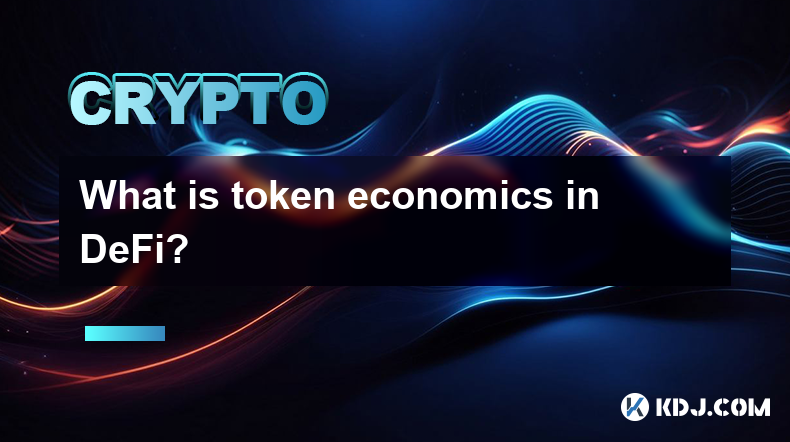
Key Points:
- Token economics in DeFi defines how tokens are used to incentivize and govern decentralized finance (DeFi) protocols.
- It encompasses token utility, distribution mechanisms, and economic models designed to ensure sustainability and growth.
- Understanding token economics is crucial for evaluating the long-term viability and potential risks of DeFi projects.
- Various token models exist, each with its own strengths and weaknesses.
- Analyzing tokenomics involves studying token supply, demand, inflation/deflation, and their impact on protocol value.
What is Token Economics in DeFi?
Token economics in Decentralized Finance (DeFi) is the study of how cryptocurrency tokens are designed, distributed, and utilized within a DeFi protocol to create a functional and sustainable ecosystem. It's the backbone of most DeFi projects, dictating their incentives, governance, and ultimately, their success or failure. It's not just about the token's price; it's about its role in the entire system. A well-designed token economy aligns the incentives of all participants, fostering growth and stability.
How do Token Economics Work in DeFi?
Token economics in DeFi function through a carefully crafted system of incentives and disincentives. Tokens often serve multiple purposes. They might be used to pay transaction fees, stake for governance rights, or provide liquidity to decentralized exchanges (DEXs). The distribution model, whether through airdrops, mining, or sales, is crucial in determining initial token ownership and market dynamics. The chosen model significantly influences the long-term value and stability of the token.
What are the Key Components of Token Economics in DeFi?
Several key components define a DeFi project's token economics. These include:
- Token Utility: What problems does the token solve within the ecosystem? Does it provide access to services, voting rights, or rewards for participation? A clear and valuable utility is crucial for sustained demand.
- Token Distribution: How are tokens initially distributed? Fair distribution is key to preventing early concentration of power and promoting wider participation. Methods include airdrops, mining rewards, and public sales.
- Token Inflation/Deflation: Does the token supply increase or decrease over time? Inflation can incentivize participation but might dilute existing holders' value. Deflation can create scarcity but might discourage participation.
- Governance Model: How are decisions about the protocol made? Token holders often have voting rights, allowing them to influence the project's direction.
Different Types of Token Models in DeFi
Various token models exist, each with its unique approach to incentivization and governance:
- Utility Tokens: Primarily used for accessing services or features within a DeFi protocol.
- Governance Tokens: Grant holders voting rights in protocol decisions.
- Reward Tokens: Distributed as incentives for participating in activities like staking or providing liquidity.
- Stablecoins: Designed to maintain a stable value, usually pegged to a fiat currency like the US dollar.
How to Analyze Token Economics in DeFi?
Analyzing a DeFi project's token economics requires a thorough examination of several factors:
- Token Supply: The total number of tokens in circulation and the planned maximum supply.
- Token Demand: The factors driving demand for the token, such as its utility, scarcity, and market sentiment.
- Inflation/Deflation Rate: How the token supply changes over time and its impact on token value.
- Staking Rewards: The incentives offered for locking up tokens and participating in governance.
- Transaction Fees: The fees charged for using the protocol and how they affect token demand.
- Team Token Allocation: The percentage of tokens allocated to the development team and its implications for token distribution.
Understanding Risks Associated with DeFi Token Economics
Investing in DeFi projects requires understanding the potential risks associated with their token economics:
- Inflationary Pressure: Excessive token inflation can significantly dilute the value of existing tokens.
- Market Manipulation: Concentrated token ownership can lead to market manipulation and price volatility.
- Security Vulnerabilities: Smart contract vulnerabilities can lead to token loss and project failure.
- Lack of Transparency: A lack of transparency in tokenomics can make it difficult to assess the project's long-term viability.
Common Questions and Answers:
Q: What is the difference between tokenomics and economics?
A: While both involve the study of value and incentives, tokenomics specifically focuses on the economic aspects of crypto tokens within a decentralized system, particularly their role in incentivizing participation and governance in a DeFi protocol. Traditional economics applies to broader economic systems.
Q: Are all DeFi tokens created equal?
A: Absolutely not. The design and implementation of token economics vary greatly across DeFi projects. Some might have well-designed, sustainable models, while others might have flaws that could lead to instability or failure. Careful analysis is essential.
Q: How can I learn more about DeFi tokenomics?
A: Researching whitepapers of various DeFi projects, reading articles and analyses on reputable cryptocurrency news sites, and engaging in discussions within the cryptocurrency community are all good ways to learn more about DeFi tokenomics. Understanding basic economics and blockchain technology is also helpful.
Q: Is it risky to invest in DeFi projects based solely on their tokenomics?
A: Yes, it is highly risky. While tokenomics are a crucial aspect to consider, it's vital to conduct thorough due diligence, including evaluating the team, technology, security, and market competition, before investing in any DeFi project. Tokenomics should be one piece of a much larger puzzle.
Disclaimer:info@kdj.com
The information provided is not trading advice. kdj.com does not assume any responsibility for any investments made based on the information provided in this article. Cryptocurrencies are highly volatile and it is highly recommended that you invest with caution after thorough research!
If you believe that the content used on this website infringes your copyright, please contact us immediately (info@kdj.com) and we will delete it promptly.
- Coinbase, Altcoins, and Listings: What's the Buzz?
- 2025-07-01 00:30:11
- Chainlink's Bullish Signals: Investors Bet on Long-Term Value
- 2025-07-01 00:50:12
- CICADA Finance Soars on BNB Chain: A TGE Deep Dive
- 2025-07-01 01:30:11
- MicroStrategy's Bitcoin Bet: Holdings, Sell-Off Concerns, and S&P 500 Dreams
- 2025-07-01 01:30:11
- XRPL EVM Sidechain: Ethereum dApps Unleashed on XRP Ledger!
- 2025-07-01 01:35:11
- Bybit, Kraken, and Tokenized Stocks: A New Era for Trading?
- 2025-07-01 00:30:11
Related knowledge

What is the difference between DeFi and CeFi? An article analyzing the advantages and disadvantages of both
Jun 13,2025 at 03:57am
Understanding the Foundations of DeFi and CeFiTo fully grasp the difference between DeFi (Decentralized Finance) and CeFi (Centralized Finance), it’s essential to understand their foundational structures. DeFi operates on blockchain technology, primarily using smart contracts to execute financial services without intermediaries. In contrast, CeFi platfo...
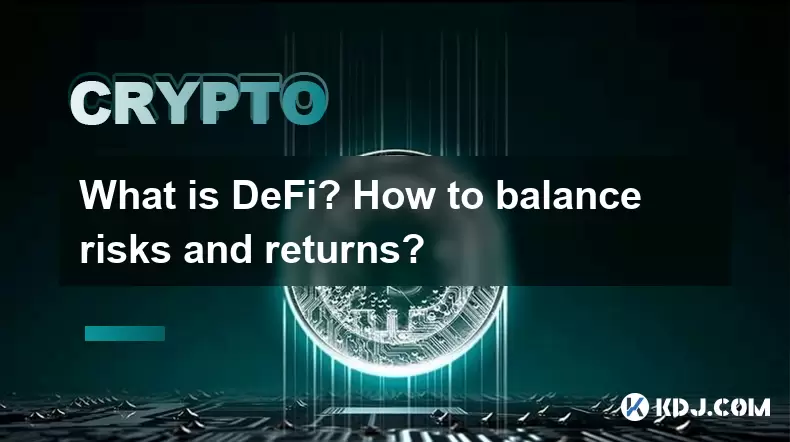
What is DeFi? How to balance risks and returns?
May 31,2025 at 12:22pm
What is DeFi? How to Balance Risks and Returns? Decentralized Finance, commonly known as DeFi, represents a revolutionary shift in the financial ecosystem, leveraging blockchain technology to create an open, permissionless, and transparent financial service network. Unlike traditional finance, which relies on centralized institutions like banks, DeFi op...
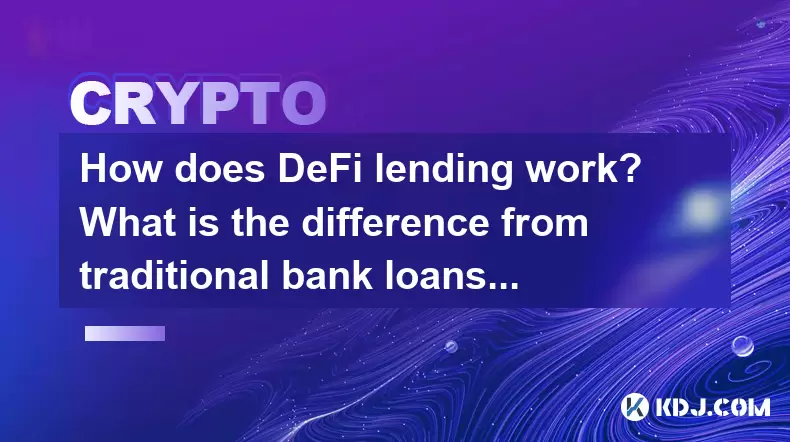
How does DeFi lending work? What is the difference from traditional bank loans?
May 29,2025 at 05:36pm
Introduction to DeFi LendingDeFi lending, or decentralized finance lending, represents a revolutionary shift in the way borrowing and lending are conducted. Unlike traditional bank loans, DeFi lending operates on blockchain technology, offering a decentralized, transparent, and often more accessible approach to finance. This article will explore the mec...
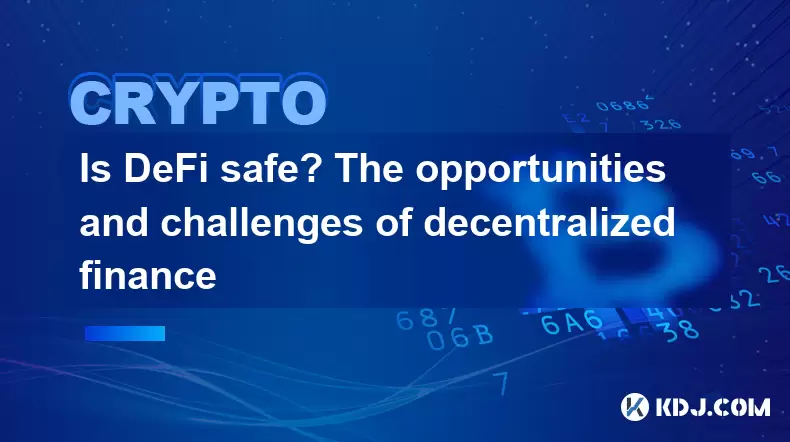
Is DeFi safe? The opportunities and challenges of decentralized finance
May 27,2025 at 02:28pm
Decentralized Finance, commonly known as DeFi, has revolutionized the financial landscape by offering a range of financial services without the need for traditional intermediaries like banks. As with any innovative technology, the question of safety is paramount. This article delves into the opportunities and challenges that come with DeFi, providing a ...
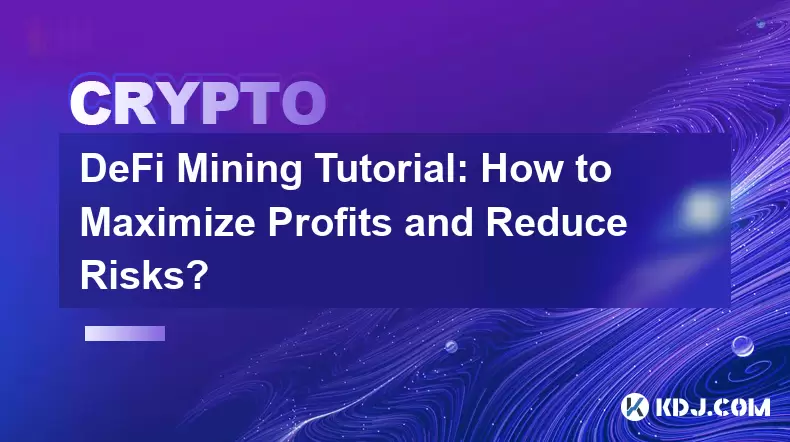
DeFi Mining Tutorial: How to Maximize Profits and Reduce Risks?
May 27,2025 at 07:42am
DeFi, or Decentralized Finance, has opened up a new world of opportunities for crypto enthusiasts looking to maximize their profits through various mining strategies. However, with great potential comes significant risk. This tutorial aims to guide you through the process of engaging in DeFi mining while focusing on maximizing profits and reducing risks...
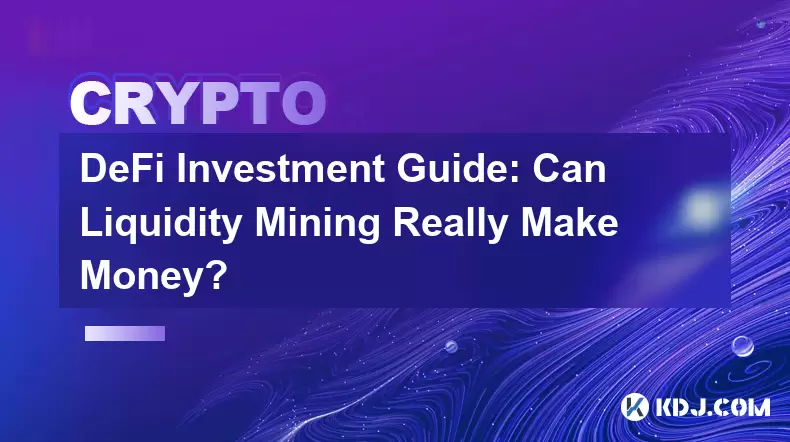
DeFi Investment Guide: Can Liquidity Mining Really Make Money?
May 28,2025 at 10:18am
Introduction to Liquidity Mining in DeFiLiquidity mining has emerged as a popular method for earning passive income within the decentralized finance (DeFi) space. This process involves users providing liquidity to decentralized exchanges or lending platforms in exchange for rewards, often in the form of the platform's native tokens. But the question on ...

What is the difference between DeFi and CeFi? An article analyzing the advantages and disadvantages of both
Jun 13,2025 at 03:57am
Understanding the Foundations of DeFi and CeFiTo fully grasp the difference between DeFi (Decentralized Finance) and CeFi (Centralized Finance), it’s essential to understand their foundational structures. DeFi operates on blockchain technology, primarily using smart contracts to execute financial services without intermediaries. In contrast, CeFi platfo...

What is DeFi? How to balance risks and returns?
May 31,2025 at 12:22pm
What is DeFi? How to Balance Risks and Returns? Decentralized Finance, commonly known as DeFi, represents a revolutionary shift in the financial ecosystem, leveraging blockchain technology to create an open, permissionless, and transparent financial service network. Unlike traditional finance, which relies on centralized institutions like banks, DeFi op...

How does DeFi lending work? What is the difference from traditional bank loans?
May 29,2025 at 05:36pm
Introduction to DeFi LendingDeFi lending, or decentralized finance lending, represents a revolutionary shift in the way borrowing and lending are conducted. Unlike traditional bank loans, DeFi lending operates on blockchain technology, offering a decentralized, transparent, and often more accessible approach to finance. This article will explore the mec...

Is DeFi safe? The opportunities and challenges of decentralized finance
May 27,2025 at 02:28pm
Decentralized Finance, commonly known as DeFi, has revolutionized the financial landscape by offering a range of financial services without the need for traditional intermediaries like banks. As with any innovative technology, the question of safety is paramount. This article delves into the opportunities and challenges that come with DeFi, providing a ...

DeFi Mining Tutorial: How to Maximize Profits and Reduce Risks?
May 27,2025 at 07:42am
DeFi, or Decentralized Finance, has opened up a new world of opportunities for crypto enthusiasts looking to maximize their profits through various mining strategies. However, with great potential comes significant risk. This tutorial aims to guide you through the process of engaging in DeFi mining while focusing on maximizing profits and reducing risks...

DeFi Investment Guide: Can Liquidity Mining Really Make Money?
May 28,2025 at 10:18am
Introduction to Liquidity Mining in DeFiLiquidity mining has emerged as a popular method for earning passive income within the decentralized finance (DeFi) space. This process involves users providing liquidity to decentralized exchanges or lending platforms in exchange for rewards, often in the form of the platform's native tokens. But the question on ...
See all articles

























































































